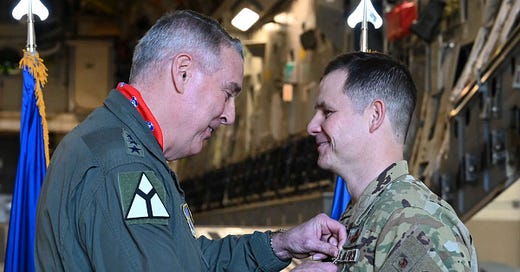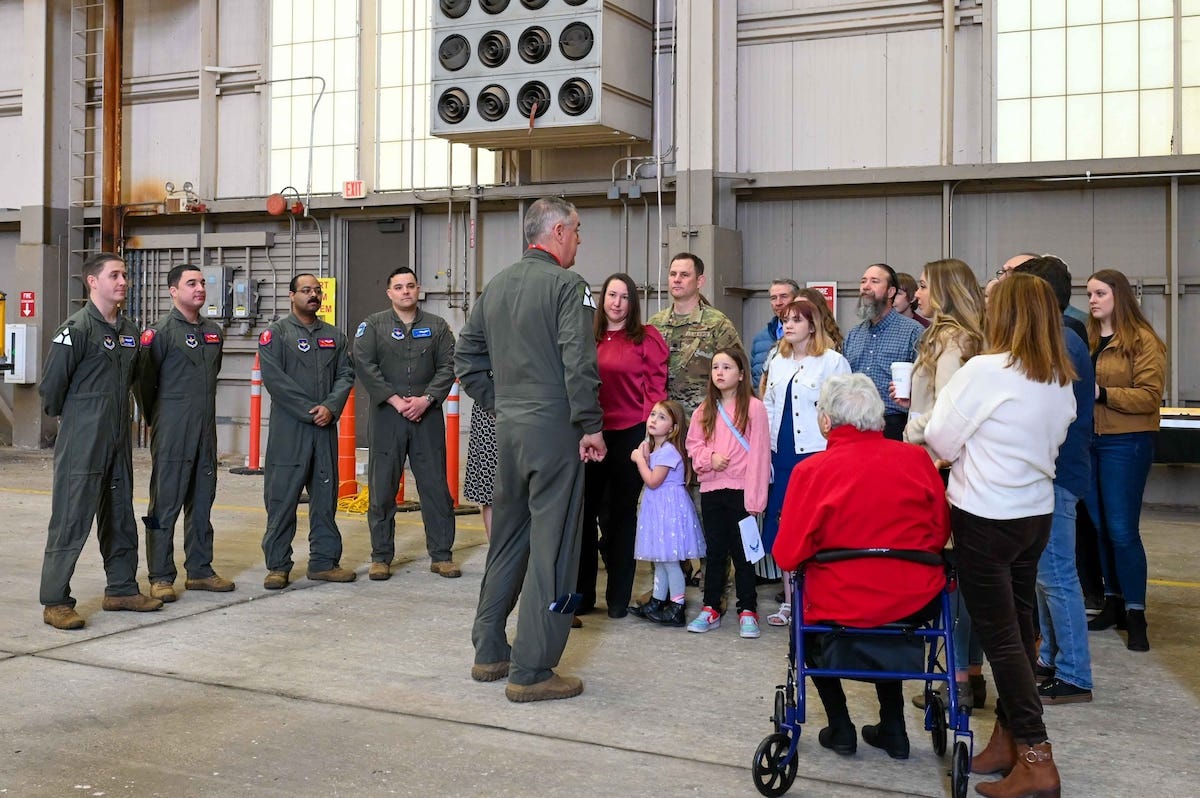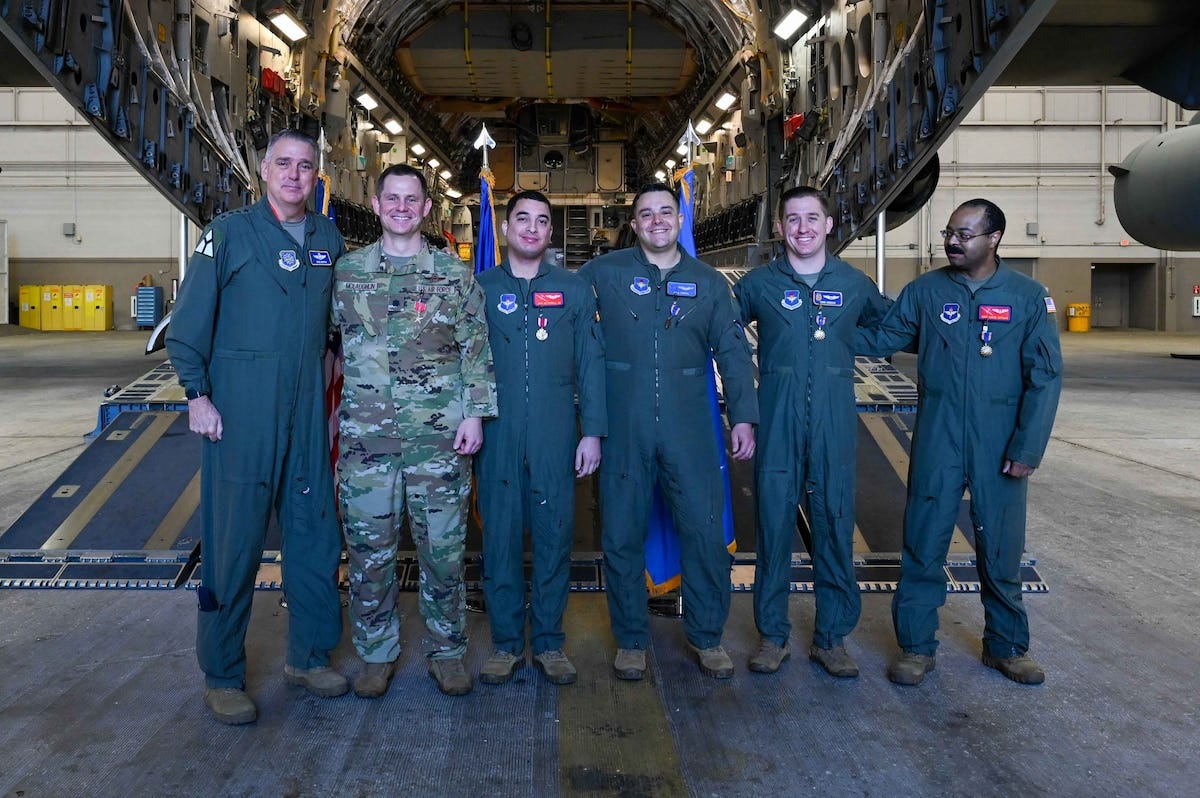Occasionally, I get stuff wrong.
Just over a year ago, Gen. Mike Minihan issued a memo telling his commanders to get ready for a fight in the Pacific.
As boss of the Air Force’s mobility command, he was signaling a need to shift focus to a different region and a different kind of war. One he anticipated would create very different demands from those his airmen were accustomed to confronting in the Middle East.
My initial reaction to the tone and syntax of the memo can be understood as:
At first, I took Minihan’s “aim for the head” militancy as an echo of trying times past. Air Force generals had worn us out during the counterinsurgencies of the prior two decades by preaching from pulpits of low credibility at knife-sharp warfighting airmen about how we needed to think and act more like our land-dwelling counterparts.
I remember sitting in an auditorium and listening to a 3-star scold several dozen field grade officers that we were too airminded. We needed to get our heads out of the sky and into the mud. He was literally telling us to stop thinking like airmen.
Of course, we ignored him, as majors most often do with poseurs.
But it was startling to think our distinctive contribution to warfighting was being placed at risk by the cockamamie politics of cloying for faux relevance to get budget dollars. Which is what the whole flummox was about.
While heralding the martial traditions of land forces, the corporate Air Force simultaneously viewed the resource competition created by protracted counterinsurgency as a threat to its modernization efforts and its future effectiveness. They made sure to be seen championing ground-centric thinking about warfare … while conducting Potomac maneuvers to the contrary.
It started to feel like “airmindedness for me but not for thee.”
The fractured psyche which followed from this game was a prominent feature of service at the time. And the ensuing say/do conflicts which bred and multiplied in the decrepit corners of human cubicle farms assassinated nearly every molecule of joy in USAF workplaces at the time.
Passionate airmen won’t follow Lumbergs. Which is part of how we ended up short of the people we need to conduct the mission.
So yeah, my first reaction to Minihan’s treatise was oh God, not this shit again. And I said so aloud, though thankfully not many people noticed and even fewer cared.
But some who cared reached out. And after a few back-channel conversations with people I trust and respect, it dawned on me I had lost the plot. I was assuming things, lacking context, and being an imbecile.
Minihan wasn’t a continuation of the cultural decline I’d come to despise. He was recovery from it.
The memo was a message to many audiences and it carried several tacit and explicit messages.
But the target audience was mobility airmen, and Minihan was licensing them to start thinking differently, and to do so with urgency and a cutting edge. They needed to hear this message after years of strategic stagnation.
He was issuing the key to the target padlock we’d all fixated upon for too long. It was time to get our heads up and over the horizon. He was saying exactly what I had longed to hear, just differently than my ears could hear it.
I later walked back my criticism. I’ve seen enough now to know what a superior leader Minihan is.
But today I walk it back even more, leaving no doubt where I stand on the current chief of my old clan.
Recognition is the most powerful drug in any organization.
Nothing lifts the spirit so much as being seen for what you contribute, or even better, who you are. That feeling that your leaders get you, see you, value you … it sets hearts aflame. When done well, it moves worlds. Because feeling good about what you contribute is such a strong incentive, leaders can get a lot more of what they want by heralding it when it happens.
Gen. Minihan obviously understands this.
Amid a schedule that would break most people, he made it a priority to personally conduct a medal ceremony last week at Altus Air Force Base in Oklahoma.
The airmen he singled out were heroes of Allies Refuge, the evacuation of Afghanistan in July-August 2021, amid an unfolding Taliban offensive.
Whatever political opinions anyone has about that historically massive evacuation, there is no debate that it was a spectacular feat of airlift, and a true test passed with flying colors for the airmen involved.
In particular, I was heartened to see Minihan decorate Lt. Col. Patrick “Howdy” McLaughlin for his leadership as squadron commander at the time.
The Air Force has not always been great about recognizing squadrons as the engines of airpower.
Here we have Minihan heralding what he wants to see more … superb leadership at squadron level when the chips are down. Undoubtedly, he has created a nuclear-hot incentive for more of the same.
And on a human level, he has given deserving, combat-tested airmen and their families a moment they will never forget.
He didn’t send a smiling lackey to do this for him. He went and did it himself. And what we don’t see in the official coverage is the heartfelt hug he shared with McLaughlin before the ceremony … or the tears in his eyes as he allowed himself to be genuinely moved by the extraordinary commitment of his people.
He is still in touch with what it all means to the people who do it. Which is all about camaraderie, belonging, and mutual support.
And that he still gets it after years at the elite level … is exceptional.
And it’s not the first or tenth example of Gen. Minihan being a once-in-a-generation leader that I have seen or heard in the past year.
May it long continue.
Before I close, there is something else I must do …
(a) because I wouldn’t want airmen to assume they’ll always have strong leaders as generals,
(b) contrast is key in seeing the true shape and temperature of an object, and
(c) I can’t resist.
Here’s a picture from 10 years ago. It’s Maj. Gen. Harry Polumbo presenting MSgt. Tommy Case with a Silver Star.
Case, a tactical air controller, earned the medal for combat gallantry during a 2009 deployment to Afghanistan. He would go on to attain the highest enlisted rank and is literally a walking recruiting poster.
A couple notes about this.
The Silver Star is America’s third highest military decoration for valor in combat. Incredibly, this was Tommy Case’s second Silver Star, placing him among the most decorated warriors in the service’s history.
Now, to take nothing away from Polumbo, this was a missed opportunity by the Air Force to demonstrate that when someone is this level of badass, we send a four star leader to mark the occasion.
The medal took five years to get approved, which is itself ridiculous, but provides plenty of time to pencil in someone with the optimal stature and gravitas to truly recognize such a rare and impressive occasion.
But I do get that four stars have important stuff to do, so it’s difficult wedging anything, no matter how critical, into their schedules.
For example, here’s a photo taken the day after Case’s medal ceremony. It depicts the Chief of Staff at the time, Gen. Mark Welsh, promoting a therapy dog.
With this intense photo op looming, it’s easy to understand why he couldn’t break away for a couple hours and shake hands with a guy who smoked two enemy fighters to save his commander’s life before calmly directing a barrage of molten steel that sent a whole slew of adversaries to meet their makers.
Now I take nothing away from the pooch, who is innocent in all this. Nothing at all. The support given by dogs like Goldie to veterans recovering from the horrors of combat is special and noteworthy.
But the bottom line is Welsh really screwed this up. He either didn’t know one of his airmen was receiving a Silver Star, which would be bad, or he delegated it so he could preside over a dog-and-pony show. Which would be generalship malpractice.
For the sake of a schedule adjustment, he could have sent a thunderous, booming signal to the world about what the Air Force cherishes. And he could have given a deserving airman a memory to last a lifetime (though Case is almost certainly indifferent to such things).
Some of the reactions to Goldie’s promo were pure gold, including a Second Lieutenant who commented “I’ll start chasing tennis balls and eating Alpo if I can be a major.”
Whatever you recognize as a leader will occur more and more in your organization.
Welsh wanted more cool dogs.
Polumbo wanted (and got) more combat gallantry.
Minihan wants more combat-focused, kickass leaders like Patrick McLaughlin commanding airmen in the trying moments. And thus, more lethality, which is the whole point.
And obviously, I want more of Minihan doing what he does best, which is elevating the human spirit.
It’s going to matter a lot in the years to come, but even if it didn’t, it’s just good to see.
On my radar, and now, on yours.
TC is an independent writer, speaker, and leadership consultant. He is a retired USAF Lieutenant Colonel and veteran of the post-9/11 wars in Afghanistan and Iraq.












Not surprisingly I have words.
1. Whomever set Welsh up for that nonsense should be cashiered. It’s up to Welsh to recognize bad ideas, but that grinning Major in the photo should be handing out basketballs at the base gym. God bless the dog, but this is inherently unserious.
2. I hear everything you’re saying about Minihan. BUT. He was way out over his skis with those comments. He was literally talking about his pay grade and making noises with strategic consequences at the highest levels. Unless you’re empowered to do that (POTUS, SECDEF, SECSTATE, VP (sometimes), COCOM commanders (WHEN specifically directed, that is to say, NOT like Fox Fallon). He needed to do 90% of what he did. That last 10% was not good.
An excellent contrast in leadership styles and well written, TC.
Good on you for owning your error; I worked directly for Col Minihan back in the day, and I too rolled my eyes a little at the memo. I came to your same conclusion that it was me out of step, and I should have trusted his instincts to get AMC back to a (Pacific) warfighting mindset.
Subscribing now...